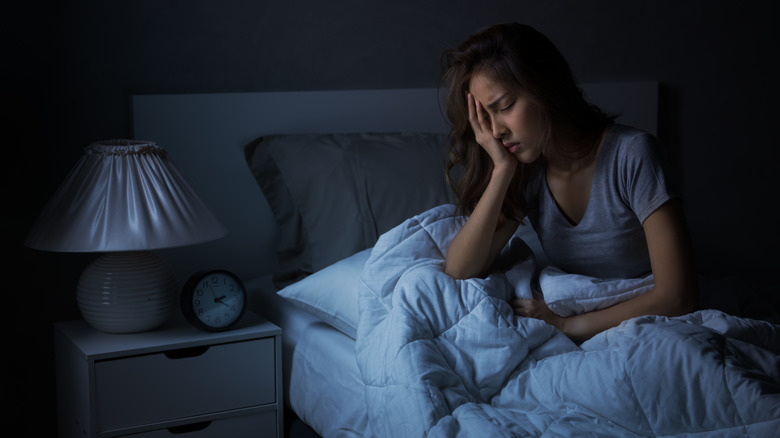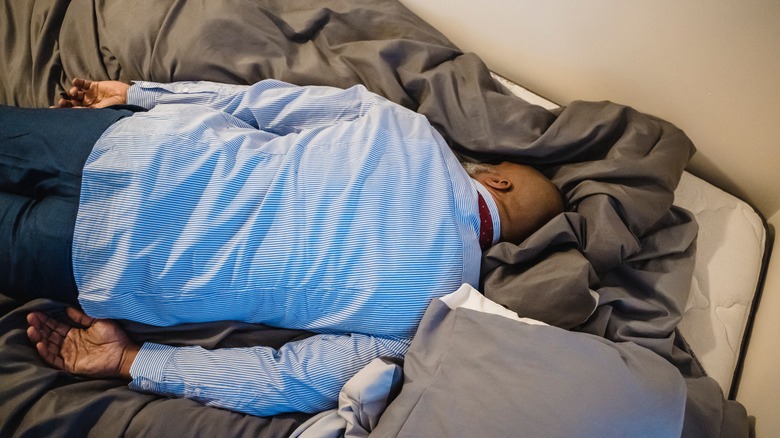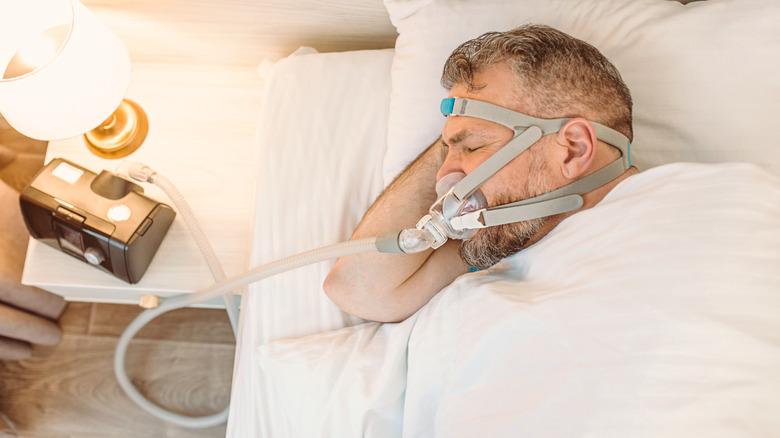What Is The Difference Between Narcolepsy And Sleep Apnea?
Most people would agree that nothing beats a good night's sleep. However, if you suffer from a sleep disorder, your nights may be far from pleasant. There are a wide range of sleep disorders, from restless legs syndrome to insomnia, all of which can impact your ability to get proper rest (via the Mayo Clinic).
Two sleep disorders that can particularly wreak havoc on your nights are sleep apnea and narcolepsy. Both conditions can make sleep difficult and, by extension, cause drowsiness, or even make you fall asleep, during the day (via WebMD). Unfortunately, daytime sleepiness alone won't tell you if you have either sleep apnea or narcolepsy, as both conditions can leave you feeling wiped out and sleepy when the sun is up. However, narcolepsy and sleep apnea both have different symptoms and different methods of treatment (via Healthline). As a result, it's important to know which condition you're dealing with.
What is disrupting your sleep?
If you have sleep apnea, your breathing will stop and start several times while you're sleeping, which prevents your body from getting proper oxygen, according to the National Heart, Lung, and Blood Institute. If your partner tells you that you snore or gasp for breath during the night, it could be a sign that you are suffering from sleep apnea.
The most common form of apnea is obstructive sleep apnea (OSA), which, according to the Neurological Wellness Clinic, happens when your throat muscles relax. Central sleep apnea, on the other hand, occurs when the signal in your brain that tells your body to take in oxygen is interfered with (via Healthline). The third type is a combination of both OSA and central sleep apnea and it's known as complex sleep apnea.
Narcolepsy is a chronic neurological condition that impacts the brain's ability to regulate the sleep-wake cycle (via the National Institute of Neurological Disorders and Stroke). It can cause you to fall asleep without warning, even while eating or talking, for a few seconds or even minutes (per Healthline). A narcoleptic patient can also experience sleep paralysis, hallucinations, and a sudden loss of muscle tone, known as cataplexy. Type 1 narcolepsy patients experience cataplexy, while Type 2 patients do not.
Causes and treatments can vary
OSA is most commonly found in people who are overweight, according to SleepFoundation.org. The excess weight causes fat deposits to block the airway. On the other hand, central sleep apnea can be caused by a number of factors, including taking medications, such as opioids, heart or kidney failure, or even a change in oxygen from high altitude (via the Mayo Clinic).
The National Institute of Neurological Disorders and Stroke notes that nearly all Type 1 narcolepsy patients have low levels of hypocretin, a hormone that helps regulate sleep cycles and promote wakefulness. Causes of these abnormal hormone levels include autoimmune conditions, genetic factors, and brain injuries.
Depending on your case, sleep apnea could be treated with lifestyle changes, such as quitting smoking or losing weight (via the Mayo Clinic). You may also use oral appliances to open your throat or sleep with a machine that delivers air pressure through a mask. This method also known as continuous positive airway pressure (CPAP) is standard for relieving sleep apnea symptoms.
There is no cure for narcolepsy and treatment requires lifestyle changes, such as taking frequent brief naps throughout the day, maintaining strict bedtime routines, avoiding alcohol and smoking before bed, as well as limiting exercising to four hours before going to sleep (via Mayo Clinic).
If you think you may have sleep apnea or narcolepsy, talk to your doctor. They will review your history and symptoms and determine the best course of treatment.



